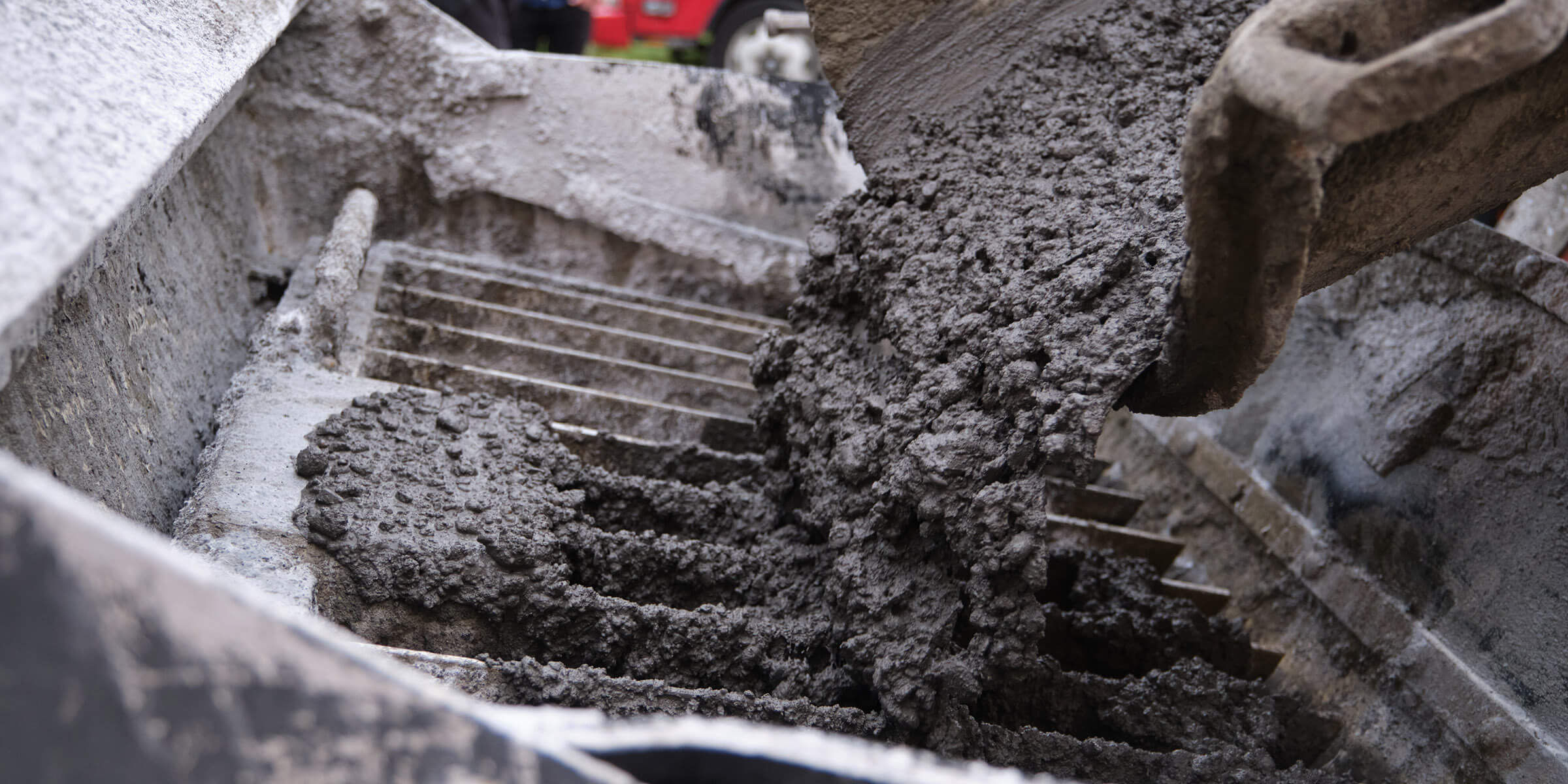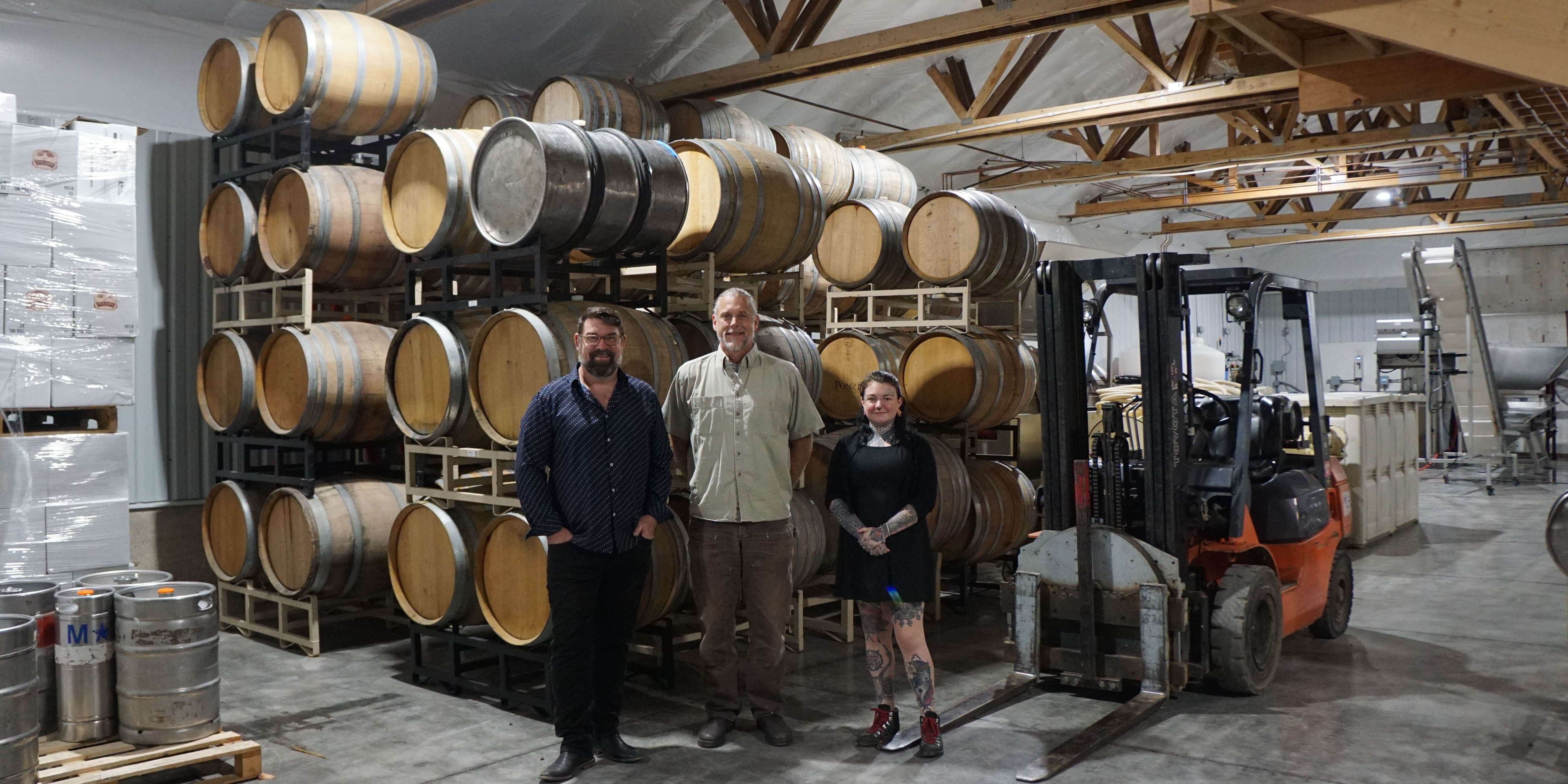Region of Innovation: Solid Carbon
The Obstacle
John Mead knows concrete. He’s worked with it for years to build his high-end fire tables under the brand of Vesuvian Forge. The positive qualities are obvious: strength, beauty, and versatility. But John Mead and his team at Solid Carbon understand something else about concrete: it is a major contributor to global carbon emissions.
“The world uses so much concrete,” says Mead from his McMinnville, Oregon office. “The magnitude is hard to express. As a visual, every single day enough concrete is poured to cover the city of Seattle in over four inches.” Couched in economic terms, if the worldwide concrete industry were a nation, it would have the 35th largest GDP, just ahead of Singapore.
Civic, commercial, and residential builders use concrete in their projects for the same reason Vesuvian Forge uses it in their tables. It can be cast to take almost any shape. Once it is set and cured, it only increases in strength and durability. And it is relatively cheap and easy to manufacture.
But these practical benefits come with environmental costs. The production of cement, one of the primary ingredients of concrete, alone is responsible for 7% of the world’s carbon emissions. In order to make it, limestone must be heated in a kiln set to 2600 degrees Fahrenheit using fossil fuels like coal and natural gas. And that 7% does not even include the environmental impact of mining the limestone, quarrying rock for gravel, and transporting ready-to-mix concrete to jobsites.
According to Mead, “For every pound of concrete produced, a pound of CO2 is put into the atmosphere.” When looking at these statistics, many see only a big problem. Solid Carbon sees a massive opportunity to radically reduce global carbon emissions by creating the world’s first commercially viable carbon-neutral concrete mixture.

The Opportunity
Mead began dabbling with the idea of a carbon-neutral concrete mixture in September of 2021. “There has been so much advancement taking place for major contributors to carbon emissions,” says Mead. “This would be things like electric transport and renewable energy sources. But very little has been done to change the makeup of concrete itself.”
This is where Mead and the team at Solid Carbon put their focus.
Solid Carbon’s primary goal become to eliminate carbon from the carbon cycle. To give a Schoolhouse Rock explanation of this process, carbon is emitted by natural and manmade processes into the atmosphere; plants like trees take that carbon and
convert it to use for energy; in the case of a tree, the carbon is returned to the atmosphere when the tree falls or is cut down and decomposes.
So, what will stop carbon from decomposing and return the
carbon to the atmosphere?
The answer: biochar.
“Biochar is one of the most effective tools for carbon sequestration in the world,” says Mead. “By baking wood material such as chips and scrap limbs instead of burning them, the carbon in those materials stabilizes and will not decompose and reenter the carbon cycle.” Solid Carbon found a way to add biochar to a precise concrete mixture, thus canceling out the carbon created in the concrete production process.
Solid Carbon has already begun to use its patented formula in what Mead describes as “low-risk” applications like production floors, sidewalks, and home foundations.
The team has overcome the first major obstacle by cracking the code on carbon-neutral concrete. The next challenge will be to break into the massive and risk-averse concrete industry.

The Vision
According to Mead, some researchers had been trying to create similar solutions, but few have taken off because they were entirely unmarketable. “I’ve spent many years building businesses. As progressive as I am in some areas, I believe in the free market and understand the importance of meeting a market need and adding value to an industry at a price people are willing to pay.”
In order for Solid Carbon’s carbon-neutral formula to be widely adopted, they will need to overcome two hurdles: price and risk.
“I believe we are very close to hitting the right price,” says Mead. “Builders and financers of projects already value green buildings and are willing to add some costs in return for a nice plaque or just the good feeling of helping the planet. Yes, our solution will add some costs, but nothing to cause someone in the budget office to lose sleep over.”
Overcoming the fear of risk will take more time. Even though Solid Carbon concrete has already been shown to be just as durable as traditional concrete, it will take absolute certainty for it to be used in a bridge or apartment complex. “When so much capital and liability is on the line, few people want to be the first to try something new,” says Mead. “Lawyers love it; builders and investors do not.”
Mead says for Solid Carbon to have mass adoption, his product cannot merely be good. Mead says, “It has to be bullet-proof.”
To reach “bullet-proof” status, Solid Carbon is continuing to pour, fine-tune their mixture, and work with local researchers. The road to mass adoption may be a slow, painstaking crawl, but as Mead and his team see it, the upside is huge.
Like covering-Seattle-in-four-inches-every-single-day huge.
